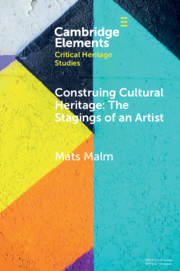Element contents
Construing Cultural Heritage: The Stagings of an Artist
Published online by Cambridge University Press: 17 May 2021
Summary
- Type
- Element
- Information
- Online ISBN: 9781108885652Publisher: Cambridge University PressPrint publication: 10 June 2021



